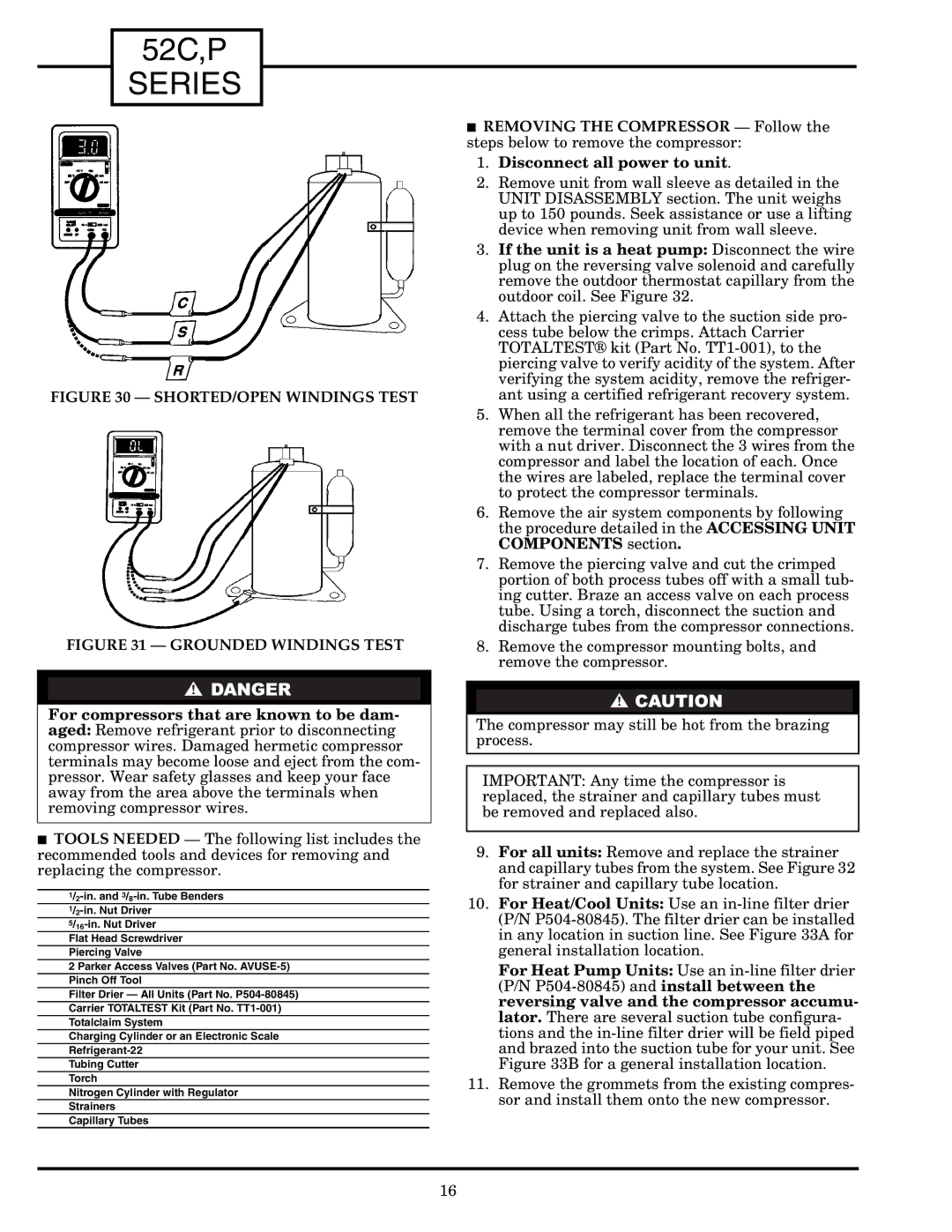
52C,P
SERIES
FIGURE 30 — SHORTED/OPEN WINDINGS TEST
FIGURE 31 — GROUNDED WINDINGS TEST
For compressors that are known to be dam- aged: Remove refrigerant prior to disconnecting compressor wires. Damaged hermetic compressor terminals may become loose and eject from the com- pressor. Wear safety glasses and keep your face away from the area above the terminals when removing compressor wires.
■TOOLS NEEDED — The following list includes the recommended tools and devices for removing and replacing the compressor.
Flat Head Screwdriver
Piercing Valve
2Parker Access Valves (Part No.
Filter Drier — All Units (Part No.
Charging Cylinder or an Electronic Scale
Tubing Cutter Torch
Nitrogen Cylinder with Regulator Strainers
Capillary Tubes
■REMOVING THE COMPRESSOR — Follow the steps below to remove the compressor:
1.Disconnect all power to unit.
2.Remove unit from wall sleeve as detailed in the UNIT DISASSEMBLY section. The unit weighs up to 150 pounds. Seek assistance or use a lifting device when removing unit from wall sleeve.
3.If the unit is a heat pump: Disconnect the wire plug on the reversing valve solenoid and carefully remove the outdoor thermostat capillary from the outdoor coil. See Figure 32.
4.Attach the piercing valve to the suction side pro- cess tube below the crimps. Attach Carrier TOTALTEST® kit (Part No.
5.When all the refrigerant has been recovered, remove the terminal cover from the compressor with a nut driver. Disconnect the 3 wires from the compressor and label the location of each. Once the wires are labeled, replace the terminal cover to protect the compressor terminals.
6.Remove the air system components by following the procedure detailed in the ACCESSING UNIT COMPONENTS section.
7.Remove the piercing valve and cut the crimped portion of both process tubes off with a small tub- ing cutter. Braze an access valve on each process tube. Using a torch, disconnect the suction and discharge tubes from the compressor connections.
8.Remove the compressor mounting bolts, and remove the compressor.
The compressor may still be hot from the brazing process.
IMPORTANT: Any time the compressor is replaced, the strainer and capillary tubes must be removed and replaced also.
9.For all units: Remove and replace the strainer and capillary tubes from the system. See Figure 32 for strainer and capillary tube location.
10.For Heat/Cool Units: Use an
For Heat Pump Units: Use an
11.Remove the grommets from the existing compres- sor and install them onto the new compressor.
16
